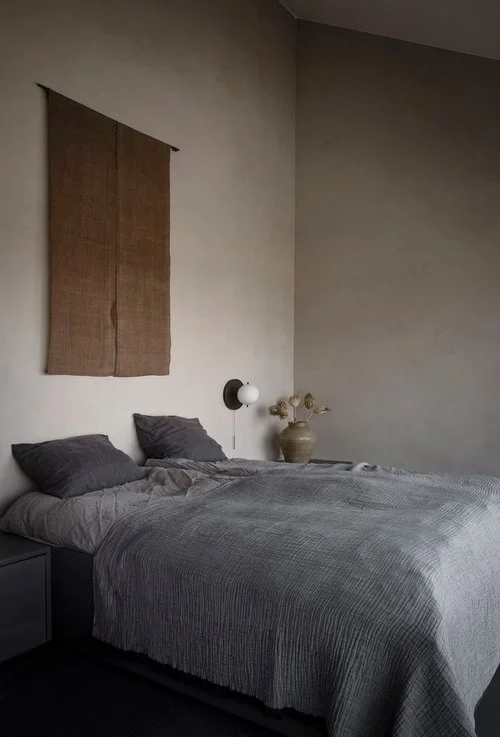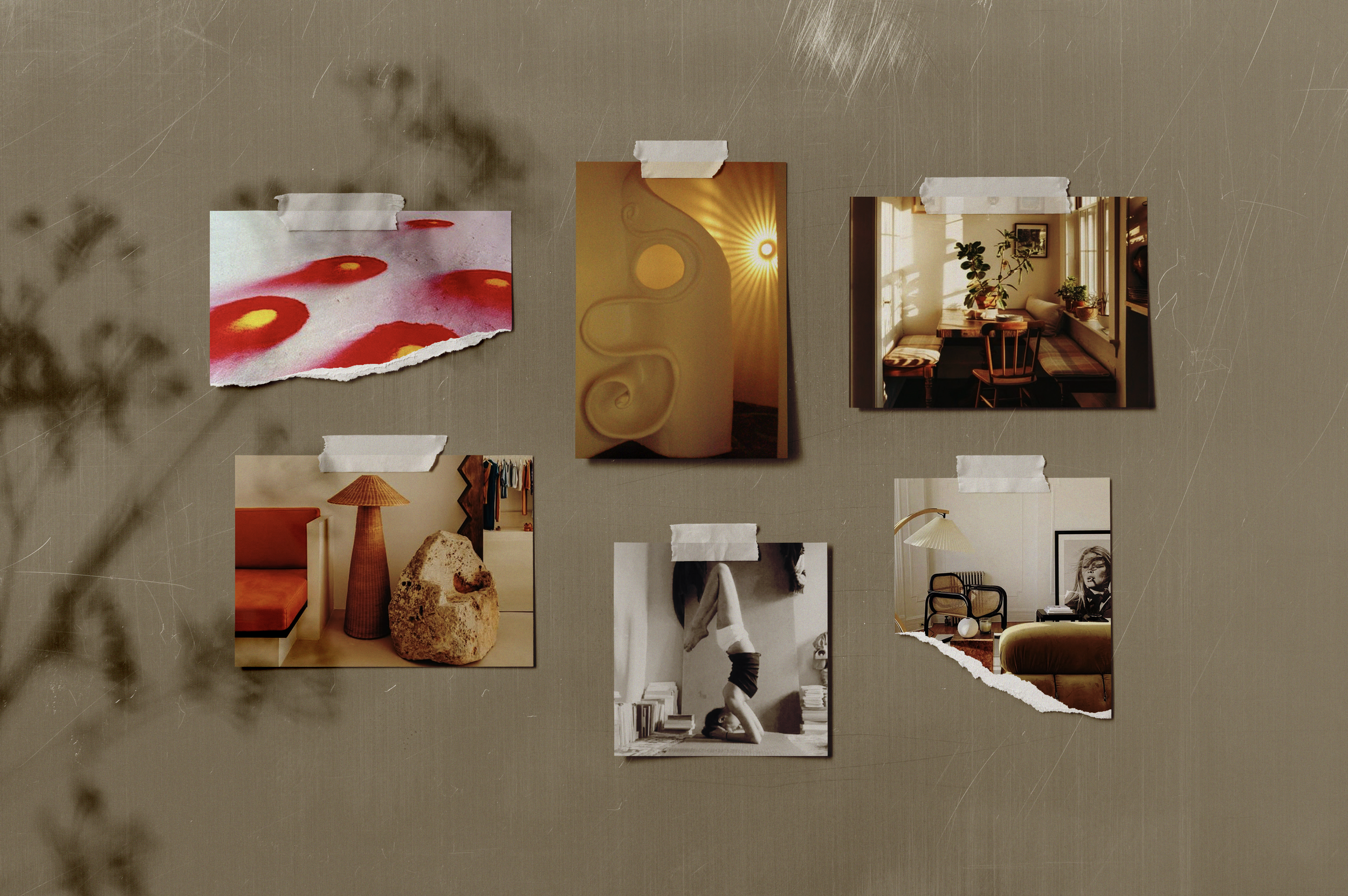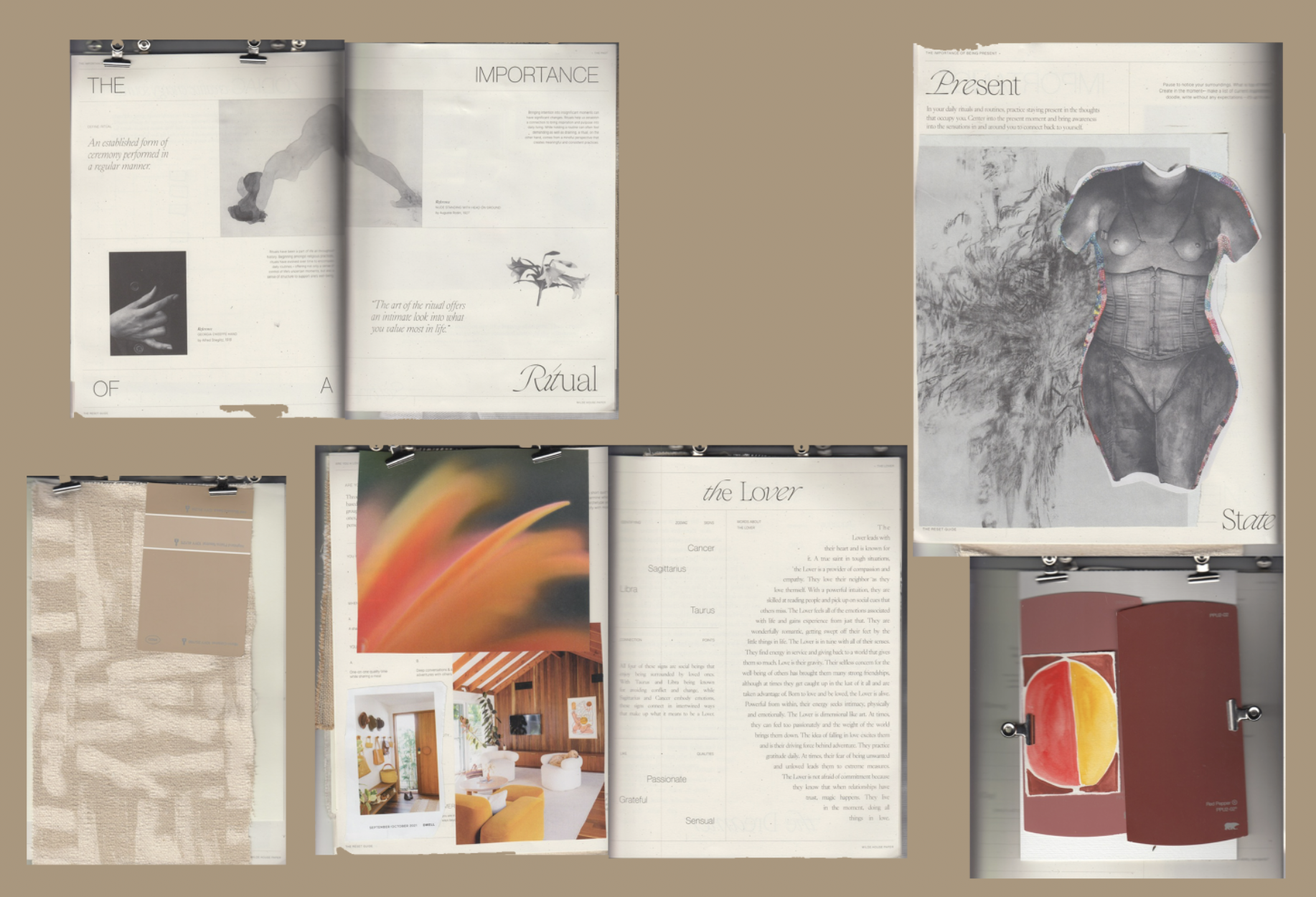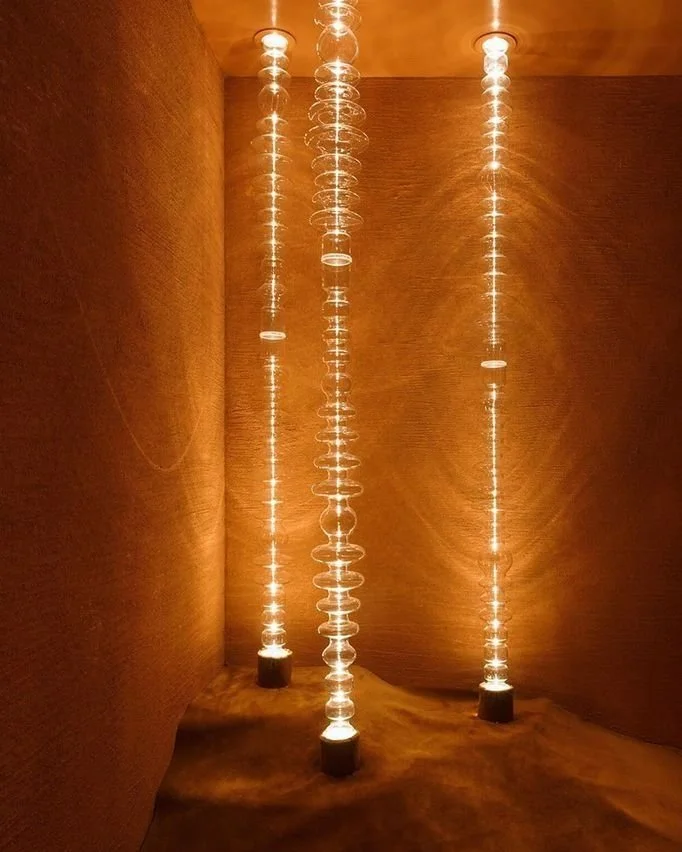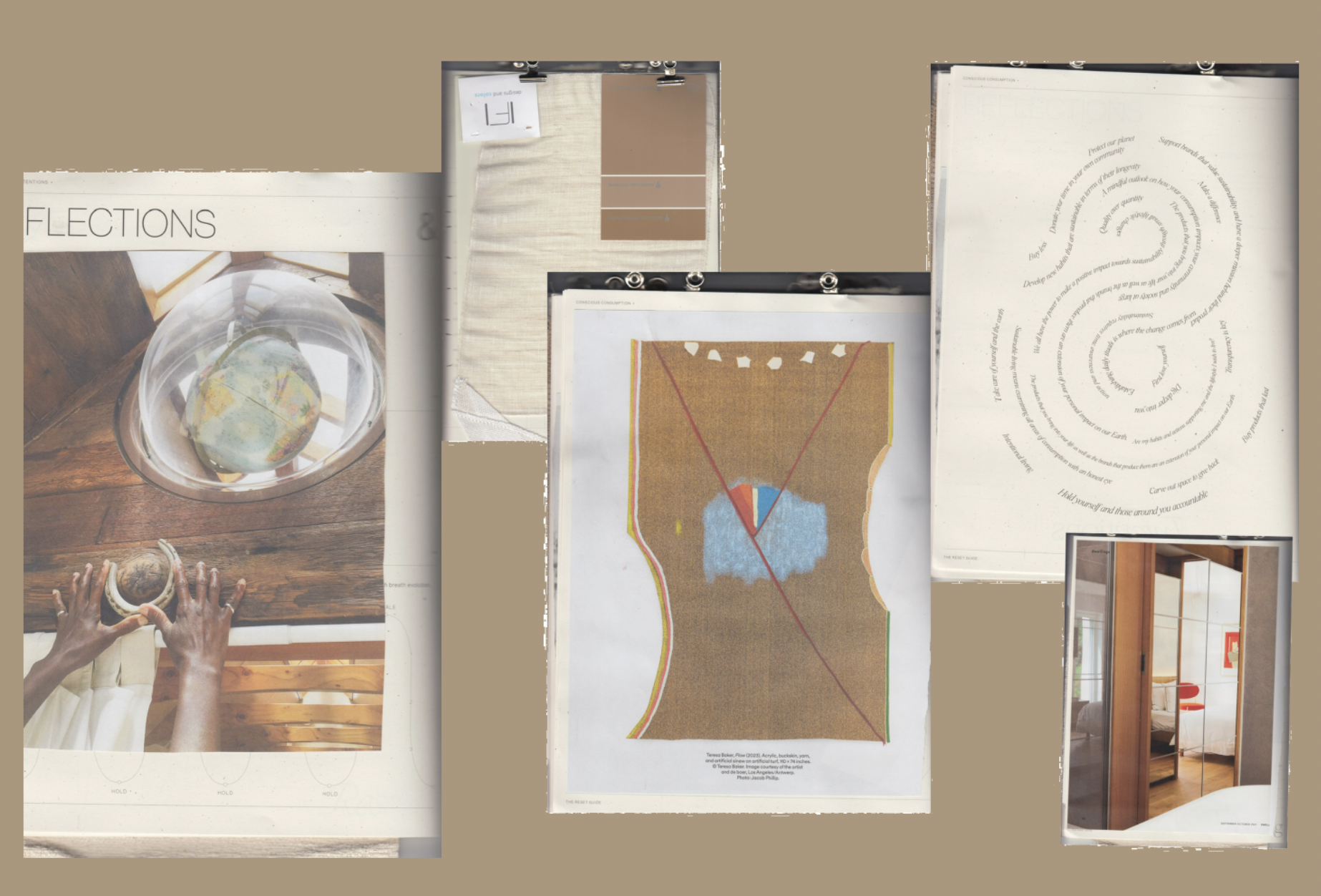Design for Wellbeing Blog
Ongoing research & borrowed photos with the goal of discovering “Design For Wellbeing,” which includes elements of Biophilic design, Sustainable design, Sensual design, and Feng Shui.
**PLEASE NOTE: This page is a work in progress that I add to over time - not a complete research project. Check back for periodic updates :)
A study on the environments + rituals that foster wellness, culture, healing
Design for Wellbeing is an exploration of how our environments shape our physical, emotional, and spiritual wellness. Through the intersection of Biophilic design, sustainable practices, sensory experiences, and the ancient wisdom of Feng Shui, this ongoing research project investigates the elements that create spaces of healing and harmony. As a textile designer and artist, I'm fascinated by how the thoughtful integration of textures, colors, and natural elements can transform not just how a space looks, but how it makes us feel. This blog documents my journey of discovery, combining traditional design principles with holistic wellness practices to understand what truly makes a space nurturing for body, mind, and spirit.
Biophilic Design
At its heart, biophilic design reconnects us with nature in our built environments. This isn't just about adding plants to a room – it's about incorporating natural light patterns, organic materials, living elements, and nature-inspired forms into our spaces. Research shows that biophilic design can reduce stress, enhance creativity, and accelerate healing. From the way sunlight moves through a room to the use of natural textures like wood and stone, biophilic design helps us maintain our essential connection to the natural world.
Sensual Design
In the book, SOFT MINIMAL - A SENSORY APPROACH TO ARCHITECTURE AND DESIGN by NORM ARCHITECTS, the guiding principle to their design sensibility is called sensual design. Sensual design engages all five senses to create deeply nurturing environments. It's about the interplay of textures beneath our fingers, the acoustic quality of a room, the way natural light shifts throughout the day, even the subtle scents that make a space feel like home. Through careful attention to these sensory elements, we can create environments that calm our nervous system and ground us in the present moment. “For human-centric architecture and design to reconcile our relationship with the world and enhance the quality of life, they should engage all senses holistically,” (P72). Sensual design ignites our senses without overloading them. Sense stimulation helps us relax and become in tune with our surroundings.
In my research about sensual design, I found it interesting how Norm Architects criticize movements in art and design, namely Modernism and its limitations. “Movements from Rationalism to Modernism - while cultivating many valuable ideas - protest the cycle of life, insisting on uniformity, order and progress over diversity, spontaneity, and patina,” (P41). Sensual, sensory, or even essentialist (as Norm Architects refer to it) design emphasizes Nature and its rhythms. In nature, seasonality, decay, beauty, peace, destruction are all part of the process.
From material choices to the use and absence of light, it’s all about returning to the sensations and tangibility that define the human experience - “…through human-centric design, we attempt to accept the facts of life and use them to inspire beauty rooted in truth. We listen to nature’s story of artistry, optimism, imperfection and impermanence, and bring these poignant qualities into the work,” (P41). I appreciate this earnest, almost humble approach. It is a vastly different approach than what the commercialized “fast-fashionization” of our design industry offers, one that begets materialism over resourcefulness.
Furthermore, natural materials increase our haptic awareness and provide a sensory experience through touch. “Human-centric design is necessarily haptic, treating the skin with a spectrum of smooth, textured, hard, soft, warm and cool sensations. By harmonizing tactile qualities, a space or object can imbue intimacy…” (P75). It’s this diversity of textures and sensations, often found in nature, that can ground us.
In anxiety management, there is a technique called “5-4-3-2-1.”
5: Acknowledge FIVE things you see around you. ...
4: Acknowledge FOUR things you can touch around you. ...
3: Acknowledge THREE things you hear. ...
2: Acknowledge TWO things you can smell. ...
1: Acknowledge ONE thing you can taste.
This exercise mitigates derealization and helps to ground your body in the moment. In my experience, this technique helps to distract myself from anxious thoughts and engage with my environment, as well as provide life-changing relief to the threat of an oncoming panic attack. What 5-4-3-2-1 and sensual design have in common is the use of our senses to decrease stress based on our environment.
Seaside Abode by Norm Architects
Feng Shui
This ancient Chinese practice views our spaces as living entities that influence our energy, health, and fortune. Feng Shui principles guide us in arranging spaces to optimize the flow of chi (life force energy), considering factors like room layout, color choices, and the positioning of furniture and objects. While rooted in tradition, these principles often align surprisingly well with modern design psychology and our innate sense of spatial harmony.
The Integration
What makes Design for Wellbeing unique is how these different approaches converge. A well-designed space might use sustainable materials with beautiful natural textures (engaging both environmental consciousness and sensory awareness), position them to maximize natural light (following both biophilic design and Feng Shui principles), and arrange them in a way that promotes both energy flow and practical functionality. This holistic approach creates environments that not only look beautiful but actively contribute to our health and wellbeing.
As someone deeply immersed in both design and healing practices, my approach to Design for Wellbeing draws from multiple streams of knowledge and experience. My foundation as a textile designer has taught me how materials, textures, and colors can profoundly impact our experience of space.
This technical expertise is enriched by my journey in holistic wellness - I'm a certified Reiki Level 1 practitioner, a long-time student of Feng Shui, avid tarot reader, and a dedicated explorer of astrology for over a decade. My personal practice also includes hot yoga, quarterly acupuncture, and a tremendous commitment to personal growth through work with both therapists and life coaches. This unique combination of design expertise and wellness practices allows me to approach spaces with both aesthetic precision and healing intention.
What fascinates me most is the intangible quality that makes a space feel truly nurturing - that moment when a room shifts from being simply beautiful to becoming a sanctuary for wellbeing. Through this blog, I share my ongoing exploration of how design elements, ancient wisdom, and modern wellness practices can come together to create environments that support both physical and spiritual flourishing.





